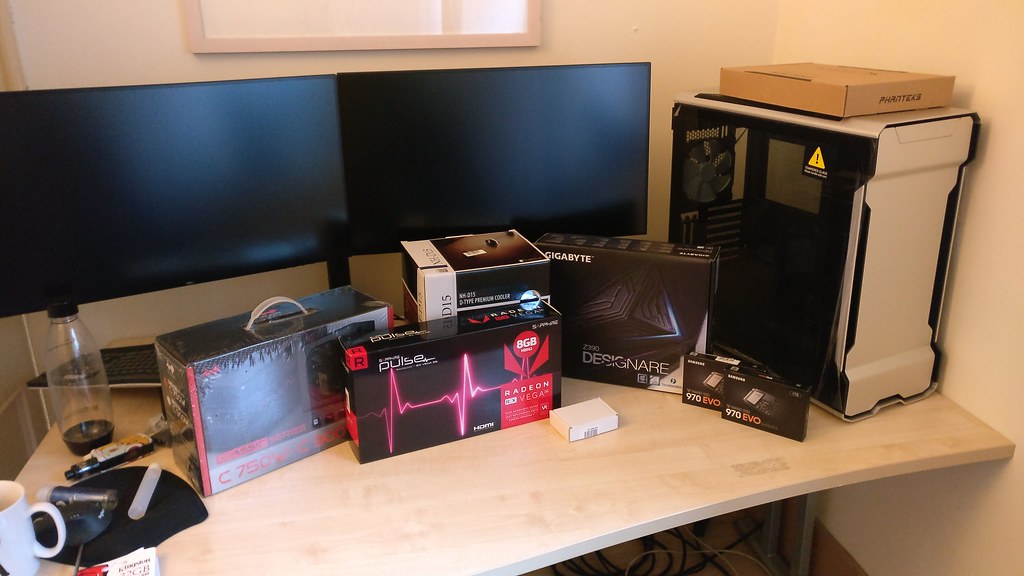Hi folks, I'm building a home machine to take some workload off my office machine (company owned) and allow me to work from home when I want.
I have a question about CPU vs. vCPU vs threads.
I need to run 8 - 10 VMs for OpenStack and OpenShift deployments (fewer if absolutely necessary). Initially I was speccing an i7 9700k, 8 cores 8 threads. How many CPUs/vCPUs does this give me to assign to VMs? I'm assuming 8, whereas the i9 9900k with 8 cores 16 threads would give me 16 vCPUs for my VMs? Or the i7 8700k with 6 cores 12 threads would give me 12 vCPUs?
I don't want to go Threadripper because I need to dual boot RHEL, and I want the ease of the Intel CPUs for compatibility. But maybe that's not correct?
For anybody interested, here's the plan so far:
Motherboard: Gigabyte Z390 Designare
CPU: i7 9700k or i9 9900k
CPU cooler: Noctua NH-D15
GPU: AMD Radeon RX580 8GB Pulse
Linux boot drive: Samsung 970 EVO 250GB M.2 NVMe
Mac OS boot drive: Samsung 970 EVO 250GB M.2 NVMe
Storage: Samsung 860 EVO 1TB SATA
Case: Phanteks Evolv X ATX
Cheers,
Alex
I have a question about CPU vs. vCPU vs threads.
I need to run 8 - 10 VMs for OpenStack and OpenShift deployments (fewer if absolutely necessary). Initially I was speccing an i7 9700k, 8 cores 8 threads. How many CPUs/vCPUs does this give me to assign to VMs? I'm assuming 8, whereas the i9 9900k with 8 cores 16 threads would give me 16 vCPUs for my VMs? Or the i7 8700k with 6 cores 12 threads would give me 12 vCPUs?
I don't want to go Threadripper because I need to dual boot RHEL, and I want the ease of the Intel CPUs for compatibility. But maybe that's not correct?
For anybody interested, here's the plan so far:
Motherboard: Gigabyte Z390 Designare
CPU: i7 9700k or i9 9900k
CPU cooler: Noctua NH-D15
GPU: AMD Radeon RX580 8GB Pulse
Linux boot drive: Samsung 970 EVO 250GB M.2 NVMe
Mac OS boot drive: Samsung 970 EVO 250GB M.2 NVMe
Storage: Samsung 860 EVO 1TB SATA
Case: Phanteks Evolv X ATX
Cheers,
Alex
Last edited by a moderator:



 ... so maybe this thread will just disappear. In the meantime, I have another off-topic question - how does one cool a reference Vega 56? Is that little built-in fan really enough??
... so maybe this thread will just disappear. In the meantime, I have another off-topic question - how does one cool a reference Vega 56? Is that little built-in fan really enough??